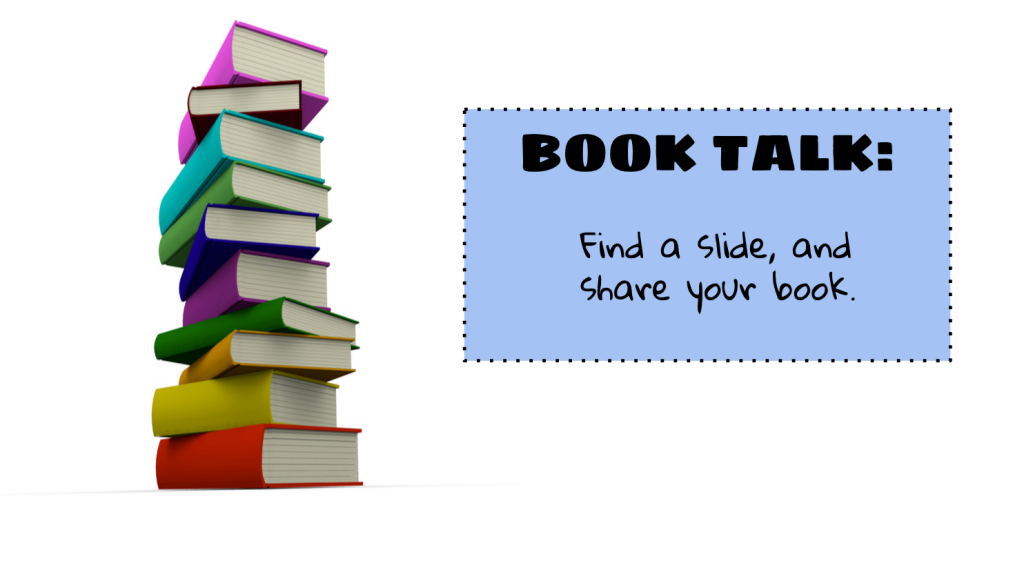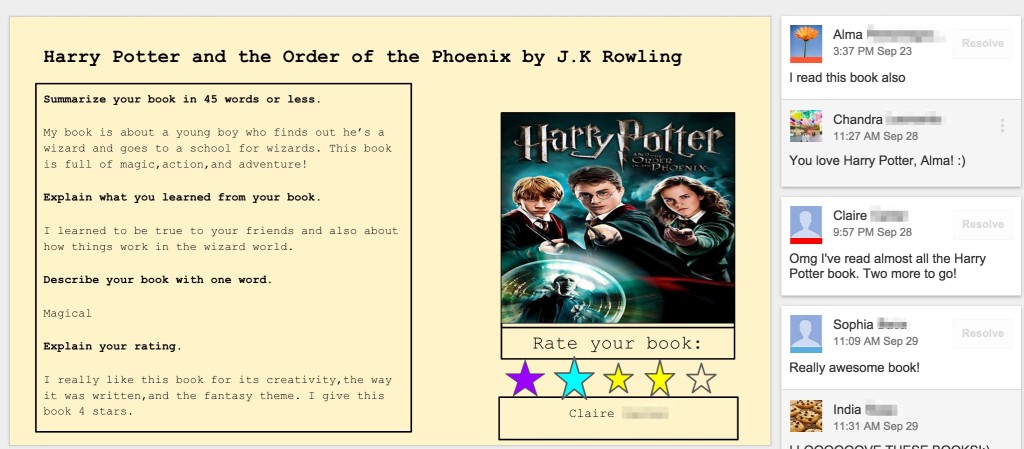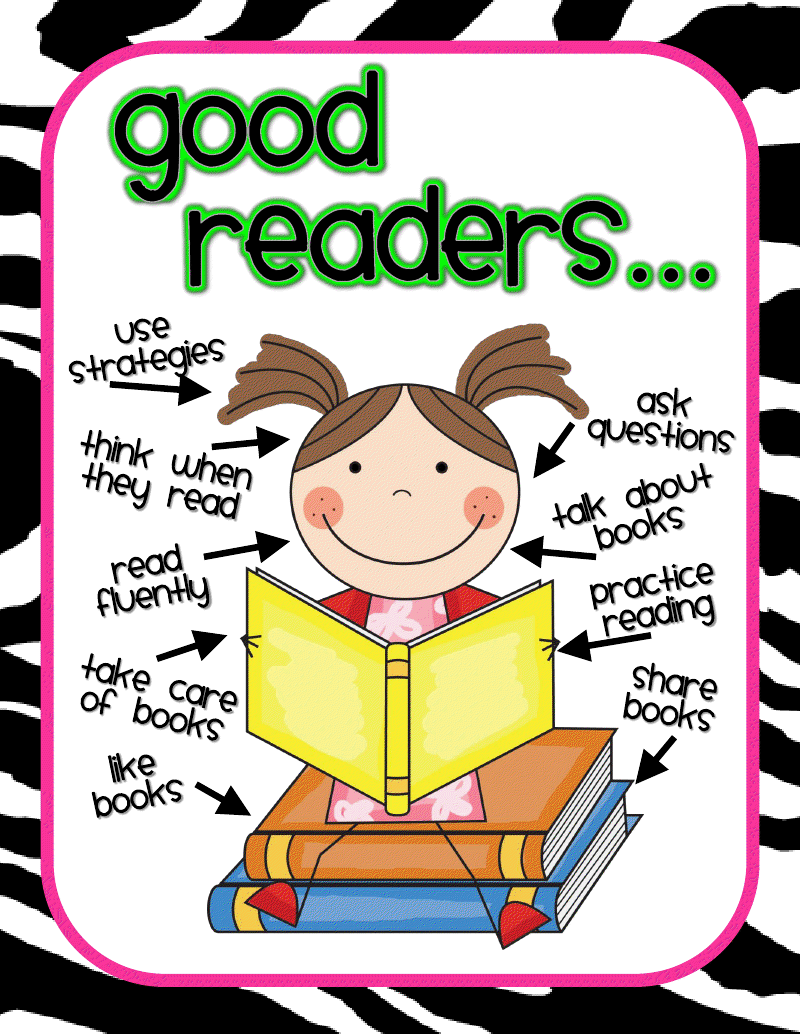Hi, students! Here are the details for today’s classwork:
Before we tackle simple, compound, and complex sentences, we’re going to quickly review subjects and
predicates.

Hi, students! Here are the details for today’s classwork:
Before we tackle simple, compound, and complex sentences, we’re going to quickly review subjects and
predicates.
We just so happened to read it on a rainy day. With the lights off. All binds closed. With rain sounds in the background. 🙂 It was a great day!
My students used Actively Learn to read and annotate the text and answer text-dependent questions. I’ve known about Actively Learn for over a year now, but I FINALLY got a chance to really use it in class. I loved it! I’m going to poll my students this week to see how they like it, and I’ll report back with some updates.
Here’s what my students will be working on for the next two days as we wrap up our work for this story:

Earlier in the school year I was trying to figure out a way to have my students talk about the books they were reading without having to crank out a hum-drum book report every month.
I decided to use Google Slides. Students were able to provide a brief synopsis about the book on a slide, and then they could read classmates’ slides and leave comments. I was floored by how enthusiastic my students were about their Book Talks! I had students asking if they could talk about more than one book, and many of my students continue to use the Book Talk slides to find new books to read.
Here is a YouTube video I created for my students to explain how to fill out their slides:

Tips, Tricks, and Ideas:
How to Get Started:
Happy Book Talking!
First, it was hard for me to believe summer was over. Now, I’m trying to figure out how the first two weeks of school zoomed on by! We kept busy over the past ten days; I had an aide comment, “Wow! You’ve got these kids working hard in here!” WOOHOO! Yeah!
Let’s take a look at what we’ve been working on, shall we?
Writing Survey and Rhetorical Awareness
I spent the summer reading Teaching Writing that Matters: Tools and Projects That Motivate Adolescent Writers. Gallagher and Lee stress the importance of students being rhetorically aware; in other words, students need to know their audience, their purpose, and context for writing. I can remember being asked several times to write about myself during the first days of school. By the time you reach middle school, About Me essays can be a bit boring to write. Gallagher and Lee suggest having students complete a writing survey followed by a Three of Me activity. The Three of Me activity requires students to write three different descriptions of themselves. I thought this would be a great way for me to informally assess students’ writing, and it allowed them to write about themselves in different ways.
Here’s a sample of the writing survey students completed. I really enjoyed reading through these because I got to see some of the rules of writing students have heard throughout elementary school, and I got to see who LOVES to write and who HATES to write.
For the Three of Me assignment, students had to introduce themselves to the class, describe themselves as if they were in an advertisement, and write a campaign speech explaining their qualifications.
Part 1:
Part 2 (students used Google Draw for their “advertisements”):
Part 3 Students explained their qualifications for a public office.:
At the beginning, this concept was a bit difficult for students comprehend. We had to review the words qualifications and public office. We watched a few middle school campaign speeches on Youtube, looked at campaign posters, and watched President Obama give speeches to various audiences. Those videos and images seemed to help a lot!
Reciprocal Teaching/Fab Four Reading Strategies
I also introduced students to Cornell Notes. This was a very scaffolded version of Cornell Notes. My aim is to continuously model how to take notes during the first trimester and continue to loosen the strings as the year progresses. For this lesson, students filled in the yellow blanks with words from my PowerPoint. This lesson was about the Fab Four reading strategies: predict, question, clarify, and summarize. We watched this video and a video I made last year (you’ve gotta watch this! The students love this video!).
On Friday, students came to class and read over their Cornell Notes and discussed any questions they had about Thursday’s lesson with their partner. Then they quizzed each other using the Cornell Notes. After that, they took a short check for understanding quiz I created using Google Forms. 100% accuracy from all classes. Yes!!
After the quiz, we read Gary Soto’s The Drive-In Movies and used the Fab Four Strategies while reading. Before reading, students rated their knowledge of key vocabulary found in the story. We didn’t finish this, so we will revisit the vocabulary on Tuesday. Watch the video I created for this lesson here.
I know it well: I can define this word, I know the part of speech for this word, I can use it in multiple sentences, and I use it in my vocabulary.
I have seen or heard it: I can’t really define this word, but I have seen or heard it before.
I have no clue: I know nothing about this word!
We didn’t break into Fab Four groups; instead we read the story as a class (listen to me read it here), and I paused at certain points in the story to show them how to predict, question, and clarify. After we read the story, students tried their best to write a summary using 15-20 words. Students used the reciprocal reading tracker below for all of their questions, etc.
Here’s to week three!
We finally wrapped up Bud, Not Buddy by Christopher Paul Curtis! I’ve heard positive reviews from students, and I’m glad they liked the book. With Common Core State Standards, there’s a big push for students to be able to analyze literary and non-fiction texts. When we read The Lightning Thief, students read an excerpt from Joseph Campbell’s The Hero’s Journey, and ended up writing an analysis explaining how Percy Jackson followed the archetype of a hero. With Bud, Not Buddy, we read Steve Jobs’s 2009 Stanford University commencement speech, and compared fictional character Bud Caldwell to Steve Jobs. Students were also required to closely read President Barack Obama’s 2009 back to school speech, answer text-dependent questions, and compare the text with Bud, Not Buddy and the life of Steve Jobs.
Now that we’ve finished our novel, the last part of our unit included reading Rudyard Kipling’s classic poem “If”; while reading the poem, students were asked to identify personification and alliteration, use context clues to define unknown words, and answer four questions about the poem. The last and final element will be for students to list themes found in Bud, Not Buddy and If, and write an analysis comparing the novel and the poem.
I read the poem aloud first, and then we watched two YouTube videos (video A and video B) featuring the poems. I stopped the videos multiple times to ask questions, have students discuss, and make annotations to the text.
Instead of paper, we used iPads this week. I’m a Chromebook kind of girl, but because the laptops were being used for state testing, I couldn’t get my hands on them. Listed below is a student’s work:
 After students finished this assignment, they used the Explain Everything App on iPad to create screencast presentations. The presentations allowed the students to verbally state their reasoning for their answers. Check out a few gems!
After students finished this assignment, they used the Explain Everything App on iPad to create screencast presentations. The presentations allowed the students to verbally state their reasoning for their answers. Check out a few gems!
Great things:
Next time:
I’ve always been a little on the fence about reading logs and book reports. When I was a child, I LOVED to read. I could zoom through a couple of books a day, and when my mom said my sister and I couldn’t go to the library, we’d cry!
However, when teachers would assign reading logs and book reports, it pained me. I always did the reports of course, but they seemed to take the fun out of reading for me. Now, I was a kid who loved to read. Can you imagine being the student that doesn’t see the joy in reading, and you are required to submit weekly reading logs and monthly book reports?! *Shudder.*
Before analyzing the image, answer these questions about chapter six of Bud, Not Buddy with your group mates.
Open your book to page 49. There are five paragraphs to read, so each group member should read a section aloud.
Paragraph one: I stood in line… (p. 49)
Paragraph two: It showed a gigantic picture of a family… (p. 49)
Paragraph three: You could tell they were rich… (p. 49)
Paragraph four: Writ about their car… (p. 50)
Paragraph five: My pretend daddy… (p. 50)
After reading, study the pictures below. With your group, follow the 3-2-1 strategy for each picture.
3 things you notice
2 inferences you can make
1 question you have
[source] 1937
[source] 2012
Discussion Questions:
1. Infer: Why did people begin laughing and talking once they entered the mission, and why was the gigantic picture being talked about?
2. Connect/Author’s Word Choice: Why does the author, Christopher Paul Curtis, repeat the word shiny in paragraph two?
3.Compare/Contrast: Look at the image from 1937 and the image from 2012. What do these two images have in common? What is different about these images?
4. Your Position: Bud was willing to lie to the man at the mission in order to get food. If you were placed in a similar position, would you be dishonest to get your basic needs met (food, shelter, clothing)?
5. Clarify/Discuss: Ask your group any questions you have about the reading. You may also discuss any parts you like/do not like about the book.

Who’s ready to start a brand new unit? I am! We’re wrapping up The Great Fire and preparing to start reading Rick Riordan’s The Lightning Thief.
Here’s what we’ve covered with Jim Murphy’s The Great Fire:
As we start our new unit, we should be active readers. Here’s the game plan:
1. Be sure to bring sticky flags or markers to class on Monday.
2. We will label our flags similar to the image above.
3. When we read, we will make sure we are active readers; let’s engage with the text!
Extra! Extra! Read all about it!
If you’re on my email update list, this information might not be new for you. If you’re not on my email update list, you need to make sure you get added to the list!
My reading log format and procedures have been changed. Here are the details:
If your child needs some book suggestions, check out this list from Good Reads!
It’s that time of year again! School starts next week, and by now you might have had some time to visit Target and Wal-mart to nab some nifty new school supplies. You might have even scored some awesome new shoes and clothes from your favorite store at the mall. Do you want to know what you need to be 100% ready for school? A library card!
If you already own a library card, give yourself a pat on the back! If you don’t have a library card, what are you waiting on? Yes, the library is a great place to check out books, but the library offers several other perks.
Redwood City students, check out these helpful links for the Redwood City Public Library: